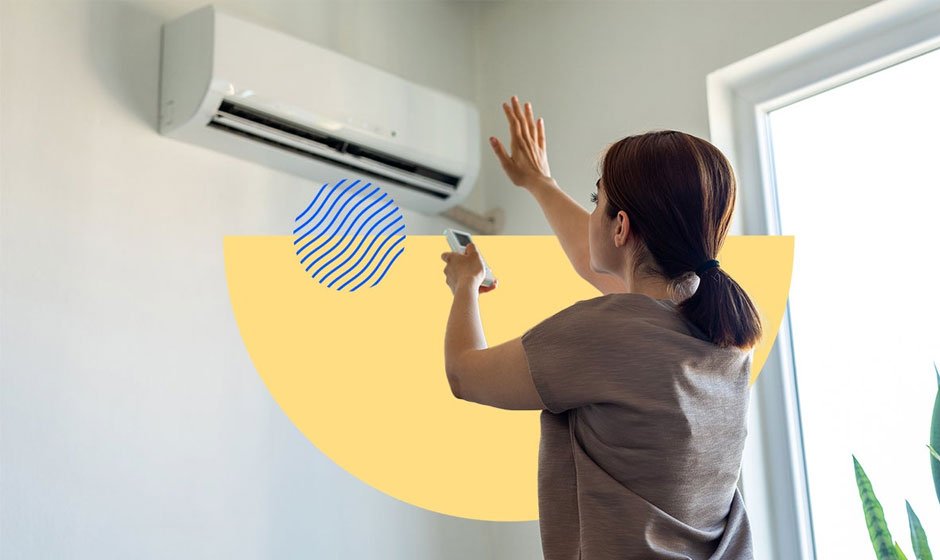As homeowners, finding ways to optimize energy usage not only helps the environment but also contributes to significant cost savings. Heating and cooling account for a substantial portion of household energy consumption. In this comprehensive guide, we will explore effective energy-saving tips to help you maintain a comfortable home while minimizing your environmental impact and reducing energy bills.
1. Upgrade to Energy-Efficient HVAC Systems
Investing in energy-efficient heating, ventilation, and air conditioning (HVAC) systems is a foundational step toward reducing your home’s energy consumption. When purchasing new systems, look for models with high Seasonal Energy Efficiency Ratio (SEER) ratings for air conditioners and Heating Seasonal Performance Factor (HSPF) ratings for heat pump. ENERGY STAR-certified units adhere to strict energy efficiency guidelines, ensuring optimal performance while minimizing energy usage.
2. Regular HVAC Maintenance
Proper maintenance of your HVAC system is essential for efficient operation. Schedule professional inspections at least once a year to check for issues such as refrigerant leaks, dirty coils, and worn-out components. Additionally, change or clean air filters regularly to maintain airflow and prevent the system from working harder than necessary. Well-maintained HVAC systems not only operate efficiently but also have a longer lifespan.
3. Programmable and Smart Thermostats
Take control of your home’s climate with programmable or smart thermostats. These devices allow you to set specific temperature schedules, adjusting the heating and cooling based on your daily routine. Smart thermostats, equipped with learning capabilities, can adapt to your habits and optimize energy usage over time. By reducing energy consumption when you’re away or asleep, these devices contribute to significant energy savings.
4. Seal and Insulate Your Home
Proper insulation and sealing gaps in your home’s exterior contribute to a more energy-efficient living space. Insulate walls, attics, and floors to prevent heat loss during winter and reduce heat gain in summer. Seal gaps and cracks around doors, windows, and other openings to prevent air leakage. This not only enhances the effectiveness of your HVAC system but also ensures a more consistent and comfortable indoor temperature.
5. Utilize Energy-Efficient Windows
Investing in energy-efficient windows with double or triple glazing, low-emissivity coatings, and insulating gas between panes can significantly reduce heat transfer. These windows help maintain a stable indoor temperature, reducing the workload on your HVAC system. Look for windows with the ENERGY STAR label to ensure they meet or exceed energy efficiency standards.
6. Utilize Natural Ventilation
Take advantage of natural ventilation to cool your home during moderate weather. Open windows strategically to allow cross-ventilation and create a cooling breeze. Use window coverings, such as blinds or curtains, to block out direct sunlight during the hottest parts of the day. This approach not only reduces the need for mechanical cooling but also enhances indoor air quality.
7. Energy-Efficient Lighting
While lighting may not directly impact your heating and cooling, energy-efficient lighting solutions can contribute to overall energy savings. Replace traditional incandescent bulbs with energy-saving alternatives such as LED or CFL bulbs. These options not only use less energy but also produce less heat, reducing the load on your cooling system during warmer months.
8. Utilize Ceiling Fans
Ceiling fans are a cost-effective way to improve air circulation and enhance the effectiveness of your HVAC system. During the summer, set your fans to rotate counterclockwise to create a cooling breeze. In winter, reverse the direction to circulate warm air efficiently. Ceiling fans allow you to adjust your thermostat slightly without sacrificing comfort, leading to energy savings.
9. Invest in Energy-Efficient Appliances
Appliances contribute to overall energy consumption in your home. When purchasing new appliances, look for the ENERGY STAR label, indicating that they meet or exceed energy efficiency guidelines. High-efficiency appliances not only save energy but also contribute to lower utility bills over time.
10. Embrace Zone Heating and Cooling
Take advantage of zone heating and cooling by using space heaters or cooling units in specific areas of your home. This approach allows you to focus on heating or cooling only the areas you’re using, avoiding unnecessary energy consumption in unoccupied spaces. Zone heating and cooling can be particularly effective in homes with varying temperature preferences in different rooms.
Implementing energy-saving practices in your home’s heating and cooling systems not only benefits your wallet but also plays a crucial role in reducing your environmental footprint. By upgrading to energy-efficient HVAC systems, conducting regular maintenance, utilizing programmable thermostats, and implementing other tips mentioned in this guide, you can create a more sustainable and comfortable living space. Remember, small changes add up over time, and your commitment to energy efficiency makes a meaningful impact on both your household budget and the planet.






